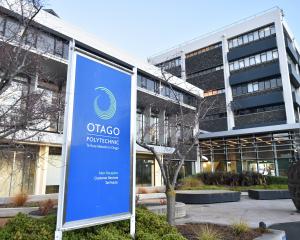The sleepy hollow of Wanaka with its Umbers garage, Lakeside Superette and Kingsway Tea Lounge is long, long gone.
The village used to be home to a small tourist industry, plenty of cribs and rural servicing businesses. Wanaka used to boom only over the summer, when holiday houses filled and the camping grounds, especially at Glendhu Bay, heaved with thousands of visitors.
The THC hotel of yesterday has undergone transformation and the Four Square in Ardmore St remains - but not much else. As the ''permanent'' population grew from several hundred in the 1960s to several thousand today (6471 in the 2013 census), the town has burst its seams several times.
Given resident numbers in what the census calls Wanaka have risen just over 94% between 2001 and last year (and just over 104% to 2175 in Hawea), more of the same is on the horizon. More people equals more houses, more and bigger shops, more facilities and an expanded urban area.
Wanaka, wisely, in 2002 consulted and considered the implications of rapid growth and how the town might look in 2020. It was recognised large tracts of land would be needed for expansion and, again sensibly, it was thought the views to the west should be preserved and other areas identified.
Although the future never arrives as predicted, the 2002 discussion provided a useful tool that was remarkably prescient. Apart from the slowdown around and after 2008, following the world and New Zealand recession, growth has surged.
That is why the Northlake plans, with provision for perhaps 1400 homes, should be backed. While is it most unfortunate for directly affected neighbours, this is one of the least bad places for development.
It is practical, too, to make provision for smaller section sizes. Wanaka will soon run out of space if its environs are split into large lots. It is far better to face facts, look a long way ahead and understand that ''urban'' living will mean small sections and even apartments.
The town, certainly compared with Queenstown, has room to breathe. But it needs areas for enlargement while retaining defined rural boundaries.
Wanaka has had the chance to plan and took that to avoid ribbon development along highways and unsightly sprawl in the worst directions.
It seems dire reports about the structural safety of the pool, built as recently as the early 1990s, has spurred urgent activity on a replacement.
Although its present site by the high school is perhaps the best for the moment, the plans for the Three Parks site beyond Puzzling World would have advantages in the long term and for access from the whole of Upper Clutha.
Wanaka, which has begun the building of indoor courts at Three Parks, now has to push ahead decisively on its pool and then on to its full sports centre. The town has become big enough to justify that.
It will soon also be big enough for Three Parks to host big box retailing, a little like Remarkables Park ''over the hill''. The central business district need not be threatened because demands for entertainment and eating businesses and specialty shops in the centre of town by the lake will only advance as Wanaka gets bigger.
Some might pine for the quiet and quaint old days, but change has had to be accepted for worse and for better. A supermarket brought town prices, restaurants abound, a smart centre (although it might already be too small) hosts concerts, it is no longer a struggle to find a sole doctor for a rural practice and transport links have improved.
Wanaka has spectacular natural advantages and a vigorous community. Even without trying, its stellar growth is likely to continue. Worldwide economic woes, a not impossible scenario given climate change and energy threats, seem the only barrier.
It is, therefore, on the basis of steady and sometimes spectacular growth that Wanaka needs to plan and build.
Northlake and Three Parks, with their capacity to absorb growth in coming decades, are central to that orderly development.











